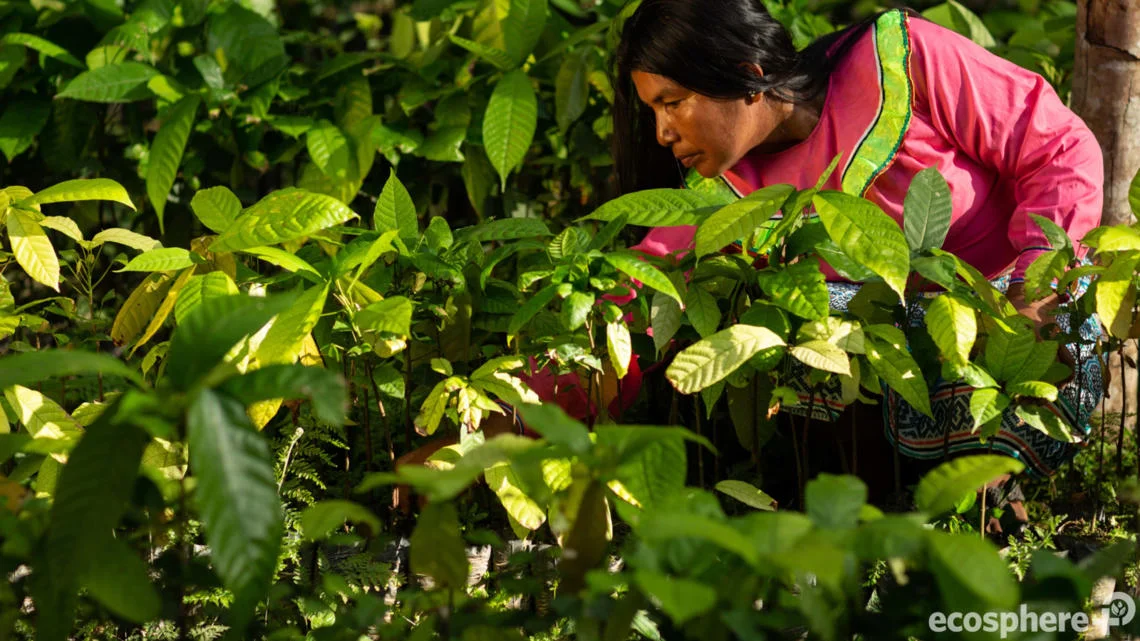Eight examples of Natural Climate Solutions from around the world show how communities and nature are at the core of best practice.
Geneva and Sharm el-Sheikh, 11 November 2022 –The Natural Climate Solutions Alliance (NCSA) is unveiling eight new Natural Climate Solutions (NCS) Lighthouses to demonstrate how nature, climate and social benefits are so closely intertwined. The Lighthouses are NCS projects that have generated verified carbon credits as well as positive environmental and socio-economic benefits for local communities and Indigenous People, thus addressing two other major crises – the loss of biodiversity and social injustice.
Businesses that avoid and reduce their own emissions in line with a science-based reduction pathway should support projects like these Lighthouses, by purchasing high-quality NCS voluntary carbon credits to counterbalance their yearly unabated emissions. Bayer, DBS, SAP, Telefonica, Unilever, as well as a number of SMEs such as Aspirations, ATPI, CHIMEI, Dodds & Shute and Nisolo are among the “NCS Leaders” celebrated in the NCS video series for using NCS carbon credits to complement their decarbonization efforts.
“Quality is going to be key to ensure Natural Climate Solutions’ credibility and effectiveness. We can’t just focus on their climate mitigation potential, but we also need to build on this to create more resilience by supporting the recovery of biodiversity and creating opportunities for local communities to benefit from these interventions.” Dominic Waughray, Senior Advisor to the CEO, WBCSD.
The 8 Lighthouses include:
- Carbon by Indigo. Helping thousands of farmers across 30 states in the US adopt regenerative farming practices to produce carbon reductions and removals across 2 million hectares of land and connecting with organizations integrating high-quality offsets in their long-term decarbonization and sustainability strategies.
- Kasigau Corridor. With over 18 million credits issued so far through dryland forest and endangered wildlife protection driven by extraordinary community sustainable development activities, this project is estimated to avoid over 48 million metric tons of CO2e during its entire lifetime.
- Laguna Om. Producing carbon credits that benefit not only the ecosystem, but also its inhabitants in the ejido (community) Laguna Om, in order to ensure the long-term conservation of more than 275,000 hectares of tropical forests in this region of Mexico.
- Makame Savannah. Reducing deforestation across 364,000 hectares of critical habitat for protected wildlife and reducing poaching by 93% by collaborating with the Masai community to set up land use plans that keep their cattle, themselves, and the ecosystem healthy.
- Nii Kaniti. Collaboration between seven indigenous communities in Peru’s Ucayali and Huanuco regions building a thriving sustainably forestry economy deep in the Amazon to conserve 127,004 hectares of critically threatened ancestral land.
- Northern Kenya Rangelands. The largest soil carbo project in the world, removing and storing 50 million tons of CO2e over 30 years by implementing sustainable grazing management over nearly 2 million hectares of savannas and grasslands.
- Ntakata Mountains. Working with local farming communities to develop Village Land Forest Reserves and use carbon credits to fund the protection of important wildlife habitats, and provide microloans for 135 businesses, 50% of which are owned by women.
- Yaeda-Eyasi Landscape. Using carbon finance to protect over 110,000 hectares of ancestral forests of the Hazda community – one of the last remaining hunter-gatherer communities in the world. Over 61,000 people benefit from strengthened land and resource rights and an increase in revenue into the community.
For more guidance on purchasing NCS credits that provide measurable benefits to nature and people, download the recently launched guide ‘Natural Climate Solutions and the Voluntary Carbon Market’.
Photo credits © Ecosphere+
WBCSD news articles and insights may be republished in accordance with the Creative Commons Attribution-NonCommercial-NoDerivatives 4.0 International Public License, and in accordance with our Privacy Policy. All Content must be featured with due credits.

